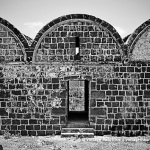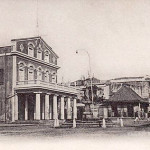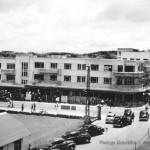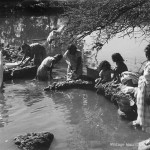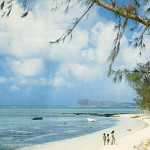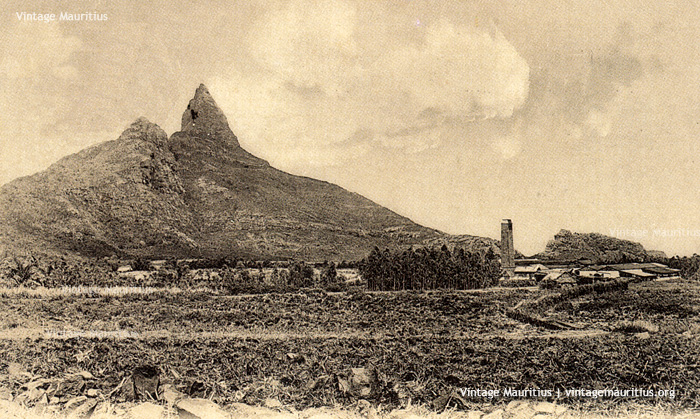
Bassin Sugar Estate – Mauritius – Rempart Mountains – 1911
Found at the foot of the Rempart Mountains, near Beau Songe, the Bassin Sugar Estate is now probably part of the Medine Sugar Estate due to the merging and consolidating of sugar mills during the restructuring years in the early 1920s. During the 1890s, a decline in sugar prices put several estates which had invested heavily in land acquisition and the modernisation of factories in a difficult financial situation, and even more, the island is visited by destructive cyclones (1892) which made the situation even more complicated.
However, with the disruption of the beet sugar industry in Europe caused by the outbreak of World War I in 1914, Britain decides to buy all of the island’s sugar production. The price of sugar rose considerably and even triples between 1913 and 1919. Strangely enough, the war brings economic progress to the country.
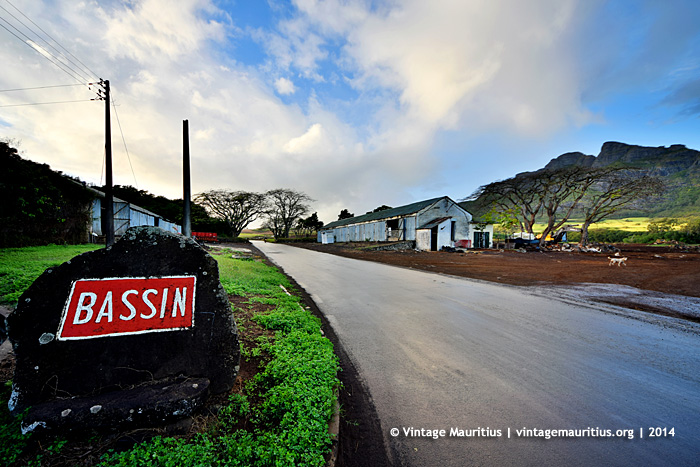
Bassin Sugar Estate – Vacoas – Mauritius – 2014
The Bassin Sugar Estate still uses this part of its lands for the cultivation of cane but all the processings are done by main factories, in this case, the Medine Sugar Plant. Some years back, the access through the estate roads was restricted and only bearers of a special pass could go through these roads, which allowed more fluid access from Holyrood/Henrietta to Palma and thereon Cascavelle. With the new roads constructed by the Government around 2011 between Vacoas to Cascavelle, this road was open to the public, without any restriction. There is however no more industrial relations to sugar processing, only the cultivation.
At this time of writing, July, the harvest season is just starting and lorries carrying sugar canes can frequently be spotted on these roads for quicker access towards the Medine Sugar Plant.
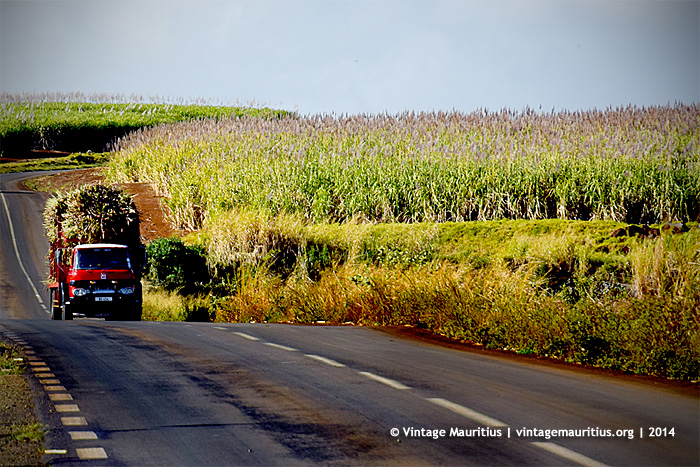
Bassin Sugar Estate – Bedford Lorry Carrying Sugar Cane – Mauritius – 2014
Unfortunately not much remains of the Bassin Sugar Factory, not even its old chimney!
